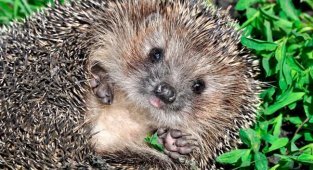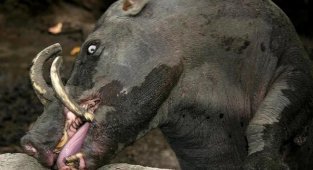Blue wildebeest: They gather in herds of thousands and perform a special “dance” that scientists cannot explain (10 photos)
Our hero today, the blue wildebeest, is a real thorn in the proverbial soft spot. Their herds cannot be controlled - these ungulates quietly graze in unprotected areas. They terrorize farmers by trampling and eating their crops. But most importantly, it was these herbivores who mercilessly trampled Mufasa! Perhaps this is why they were called blue? How else to explain the fact that an absolutely gray ungulate was seen in azure shades - I don’t know. 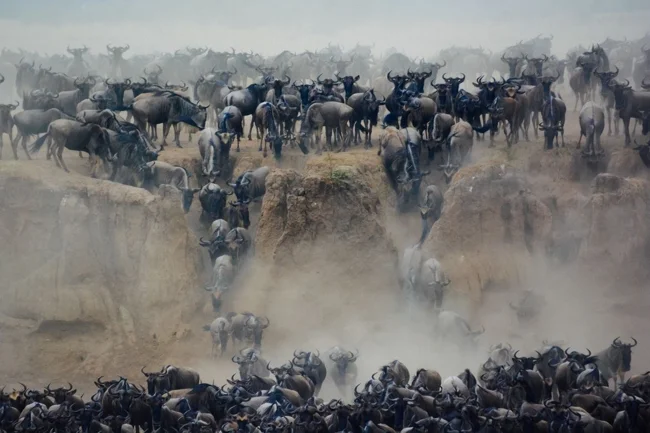
The two-meter-long underhorse gallops across the African savannahs in a friendly company of its own kind. There are as many antelopes in the herd as there are people in line to check the QR code - up to 500 of them. And the total number of our ungulate friends amounts to six figures. 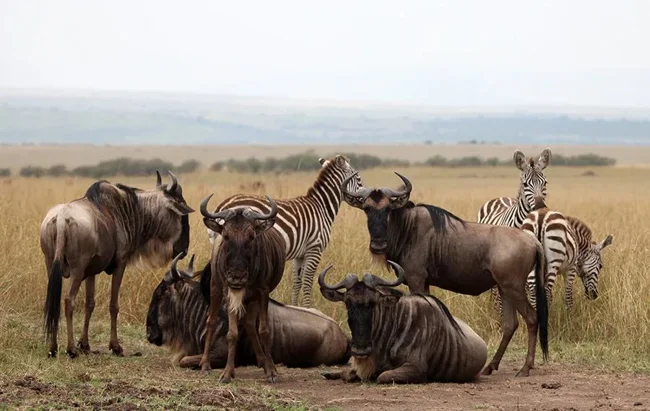
Often, numerous ranks of wildebeest are joined by other ungulates, such as zebras
A horde of hungry mouths, like a fire, destroys everything in its path. At least everything is delicious and fresh. Blue wildebeest are very picky eaters: not all grass is suitable for them, but only young grass. Have you had any rain? So we are coming to you! 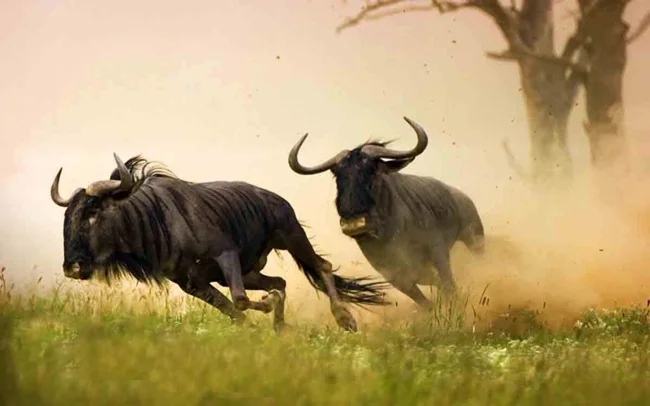
They run for fresh grass, and there is no crime.
Dozens of herds gather into one megaherd. They have been driving a living river of hundreds of thousands of animals along the same routes for centuries. They invariably follow the rains so as not to chew the hay burned by the sun. Every year, each wildebeest travels at least 1,500 km in pursuit of food. This is the same as driving from Moscow to St. Petersburg and back. On foot. 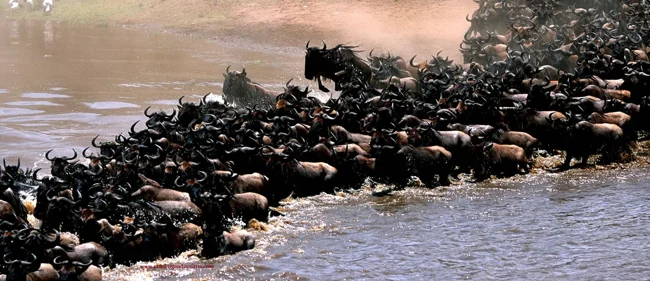
This is what I understand, the state of flow. Not like your infogypsy stuff!
Herds of wildebeest drive not only across the bare savannah, but also quite fertile fields. True, animals leave nothing of the fruits, eating everything clean. As a souvenir, the wildebeest sprinkle everything with manure. May the next plantings grow even better! Local farmers do not like this exchange at all. But nothing can be done: blue wildebeest are one of the few species that can walk outside the reserves without danger to the population. 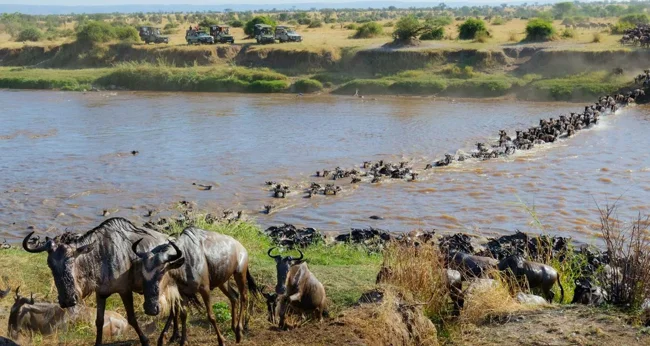
You can't save any salt for such a herd of garden thieves.
One can ask a reasonable question: how is this possible? Don't even predators eat them? Not at all: local meat-eaters, from relict reptiles to the most luxurious representatives of the cat family, crack them so that the ears crack. But a powerful and fast beast is not so easy to catch, especially in its prime. 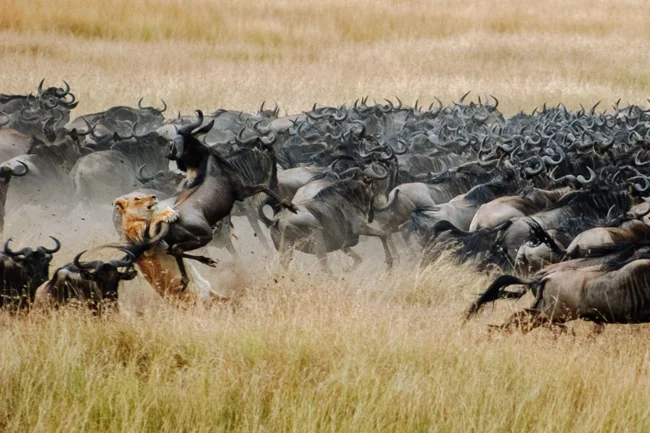
Even cubs on the fifth day after birth are able to force a hyena chasing them to swallow dust. And an adult animal can run at a speed of 55 km/h for an hour. In addition, the blue wildebeest has the same character: sometimes they bully each other in a herd, sometimes they suddenly dance a tarantella, incomprehensible to scientists... 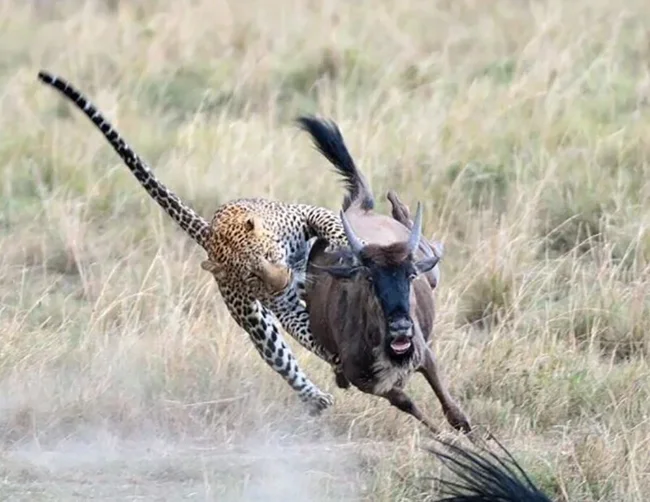
For no apparent reason, the animals begin to run in circles, kicking with their hind legs, butting the invisible enemy with their heads. The show doesn't last long, but you definitely shouldn't approach them at such moments. This feature of wildebeest behavior is known to science, but so far there is no official explanation for it. I propose a version: you need to periodically scare those around you so that you don’t get too surrounded. 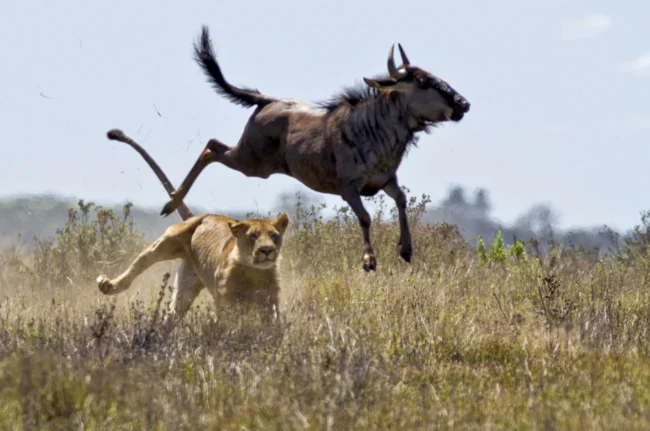
And one more point: high fertility. Every year, out of 10 females ready to mate, 9 give birth to offspring. Our gay friends have never heard of monogamy, so during the seasonal three-week rut, either complete sexual freedom or unbridled debauchery reigns - in general, the guys work for results. 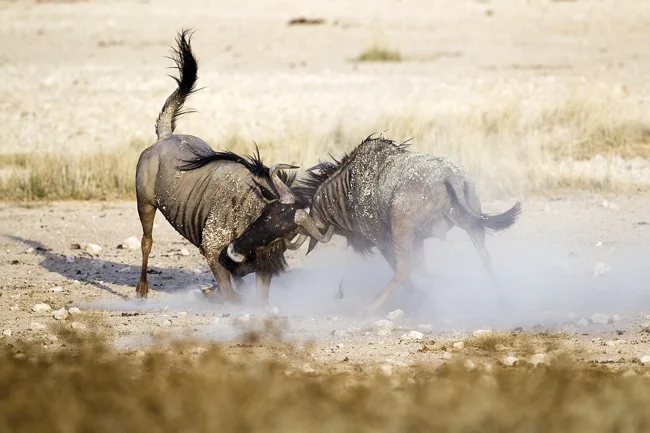
During the rut, the males fight each other seriously, but it still does not lead to bloody battles.
And the tactics pay off. After 8.5 months, mass calving occurs. The cub is ready to follow the mother 6 minutes after birth. 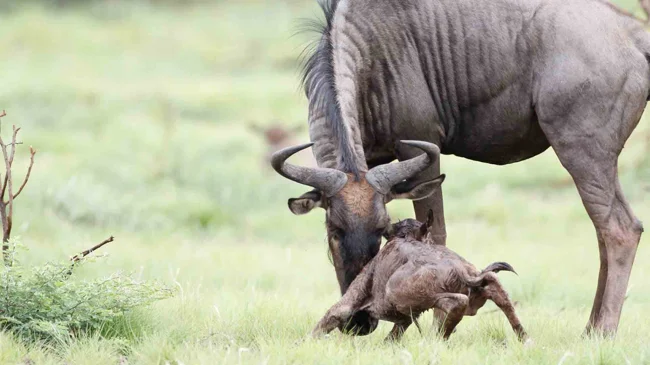
Even in a crowd of thousands, the cub finds its mother. He does this by smell.
After 8 months, the young animals become completely independent and cluster separately. Puberty will come later, as will the opportunity to take part in seasonal adult fun.

